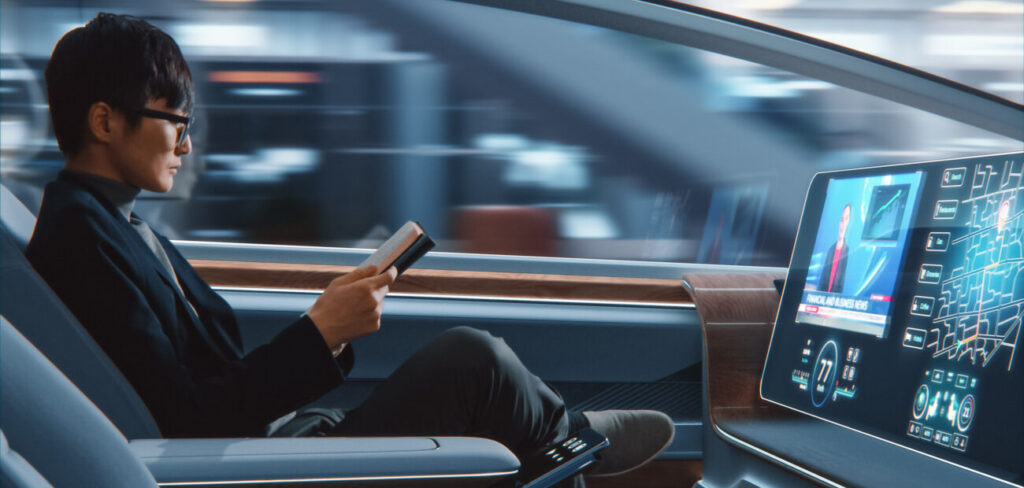They say flying is the safest way to travel and they’re right. As we speed along 40,000ft in the air most of us find it satisfying to know that a pilot with years of experience is in the cockpit, guiding us to our destination.
This is of course quite ironic, as the more we humans are involved with transportation, the more likely it is that our journey will turn hazardous. We are probably unaware of the regulatory and safety hurdles every part and every system in the plane have had to satisfy to even make it into the air.
This is psychologically difficult for us to grasp, but true, nevertheless. Turning to driving, most drivers will tell you it is not the mechanical act of driving which is difficult, but the act of driving on a road with other people.
All of us, no matter how good a driver, have potentially put ourselves in danger on the road by driving when tired or distracted, or through honest mistakes. Each year in the UK there are 1,700 fatalities on our roads, not to mention thousands more injured and millions of pounds spent.
For decades the automotive industry has been improving its model, with seatbelts, airbags, crumple zones and safety testing all playing their part to reduce this number. No matter how good the car however, engineers could never take out the agent which causes most road traffic collisions – the driver.
Which all leads us to autonomous transportation, with Tesla’s self-driving cars arguably the first mass market test of this technology that I believe could come to revolutionize transportation – if we put the right frameworks in place to ensure safety and reassure passengers.
As an owner of a Tesla, I am well aware of the pitfalls of autonomous cars as they stand now. This doesn’t change the fact that they could be a large part of the future of driving: safer, more efficient and more relaxing for those who don’t enjoy driving for its own sake.
I can hear the car community balking at my words now, but I’d encourage them to embrace the benefits of at least partial autonomy. Even for those of us who enjoy driving, there are still many times when we would rather not: in traffic, in pouring rain, at night or on particularly perilous roads autonomy will be able to take the hard work out of driving, while leaving the joyous side to us.
I’d encourage those in government and policymakers to think bigger, however. Autonomous cars are the biggest market currently but could be just the start. We should begin to prepare for an age where almost all transportation, whether by car, train, plane or boat, has the potential to be mostly or fully autonomous.
We can embrace the social and economic opportunities this will bring, but only if we get safety right. Only by feeling safe and familiar in autonomous vehicles (AV) will passengers begin to accept and enjoy the role of autonomy in the future. We are beginning to think about this age and what automated transport systems across land, sea and air will mean in practice.
What is required is a safety framework that could work across all modes of transportation, allowing consistency and safety to reassure passengers that AVs are indeed just as reliable as your driver, pilot or captain.
Indeed, aviation and maritime transportation have these existing safety frameworks now, so by adopting these for autonomous transportation too we are merely bringing it into line with existing safety procedures. You wouldn’t dream of flying on a plane which wasn’t following the regulations of the Civil Aviation Authority, so it is only by providing an equivalent framework for autonomy can we reassure passengers they are safe in autonomous vehicles too.
We need a codified, international set of behaviors set out, offering rules for land, sea and air to define what we consider safe and acceptable behaviour in autonomous transportation. By working across all three domains, we can examine each one for strengths, while using assets across transportation modes and avoiding triplication.
Once these rules and frameworks are in place, designers and engineers can begin to work this into new models, meaning the whole process of automation will become smoother. Connected and autonomous transportation is projected to be worth over £700bn (US$863bn) to the global economy by 2030, so there’s no time to waste. If we want Britain to be at the forefront of the automation revolution just as it was with the industrial revolution, we need to begin putting the building blocks in place now.
Only by looking at AVs in a holistic way can we begin to prepare for the future of transportation in decades to come. The biggest challenges in adoption of autonomous vehicles is safety and consumer acceptance. Only by putting a credible framework in place across modes of transportation can the public begin to feel familiar with, and safe in, autonomous transportation.


